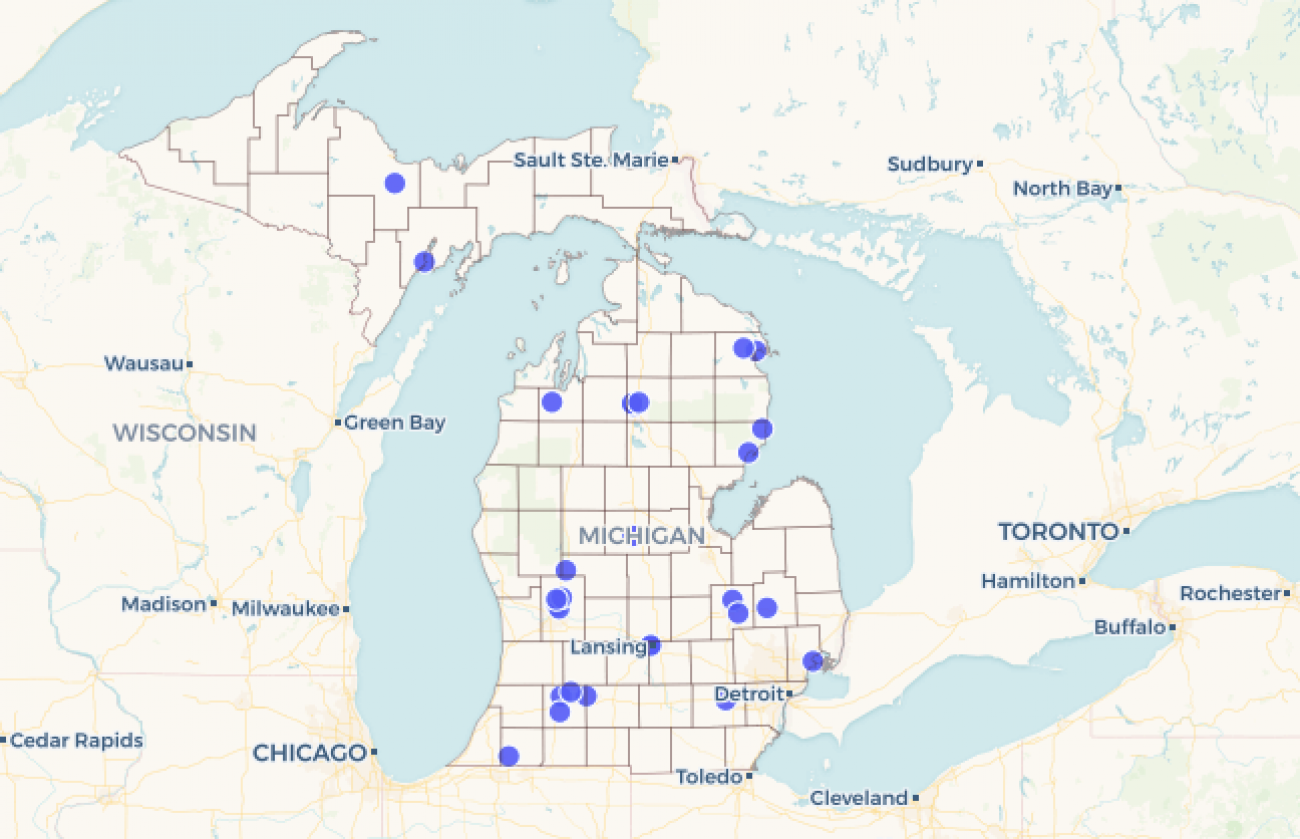Map | Here are confirmed PFAS threats to Michigan water

Update: Michigan waited years to heed warnings on PFAS dangers, expert says
Roughly 3,100 residents of Parchment and parts of Cooper Townships were told last week not to drink their water — adding the Kalamazoo County communities to a growing list of those grappling with PFAS contamination.
This map shows where PFAS has been confirmed in Michigan.
PFAS sites in Michigan
Here’s a look at communities where Michigan environmental regulators have found contaminations of PFAS, a once commonly used industrial chemical. Click on the dots for a brief summary of each site. Note: The data is current as of July 30.
Source: Michigan Department of Environmental Quality
Officially called perfluoroalkyl and polyfluoroalkyl substances, the group of chemicals had been used to manufacture everything from Teflon and Scotchgard water repellent to firefighting foam.
It’s now a national concern.
Early research suggests PFAS compounds may be linked to developmental and behavioral problems for infants and children, hormonal problems and even certain cancers. A growing number of military veterans and others who believe they were exposed to PFAS are wondering if the chemicals triggered their health problems.
Two of the most prevalent types of PFAS are called PFOA (perfluorooctanoic acid) and PFOS (perfluorooctane sulfonate), but there are thousands of different compounds.
The EPA has set a lifetime health advisory for PFOA and PFOS at 70 parts per trillion, but federal research recently made public suggests exposure could be harmful at much lower levels.
At some Michigan sites, officials have detected PFAS levels below the EPA threshold. Other sites have registered levels exponentially higher.
In Parchment, known as the “Paper City” because of the shuttered paper mill that long operated there, Lt. Gov. Brian Calley on Sunday declared a state of emergency after a test detected PFAS at more than 20-times the EPA health advisory level. Residents are now receiving bottled water.
The list of contaminated sites is likely to grow as Michigan continues to test all public water systems and schools that tap well water for the chemicals — a process it kicked off in May.
PFAS may have been used or disposed of at as many as 11,300 fire stations, landfills, airports, military sites and other locations, according to a Michigan Department of Environmental Quality presentation first reported by the Detroit Free Press.
Michigan Environment Watch
Michigan Environment Watch examines how public policy, industry, and other factors interact with the state’s trove of natural resources.
- See full coverage
- Subscribe
- Share tips and questions with Bridge environment reporter Kelly House
Michigan Environment Watch is made possible by generous financial support from:
Our generous Environment Watch underwriters encourage Bridge Michigan readers to also support civic journalism by becoming Bridge members. Please consider joining today.
See what new members are saying about why they donated to Bridge Michigan:
- “In order for this information to be accurate and unbiased it must be underwritten by its readers, not by special interests.” - Larry S.
- “Not many other media sources report on the topics Bridge does.” - Susan B.
- “Your journalism is outstanding and rare these days.” - Mark S.
If you want to ensure the future of nonpartisan, nonprofit Michigan journalism, please become a member today. You, too, will be asked why you donated and maybe we'll feature your quote next time!



